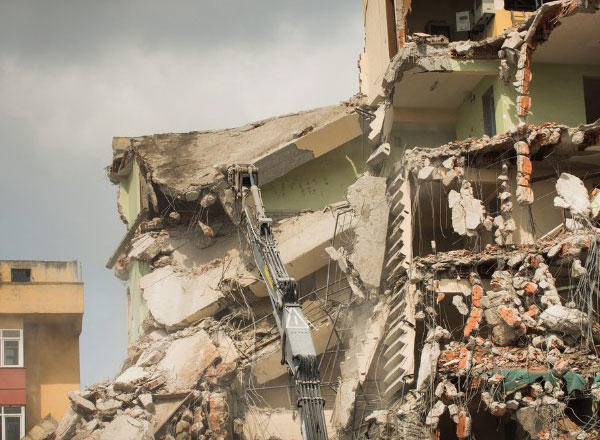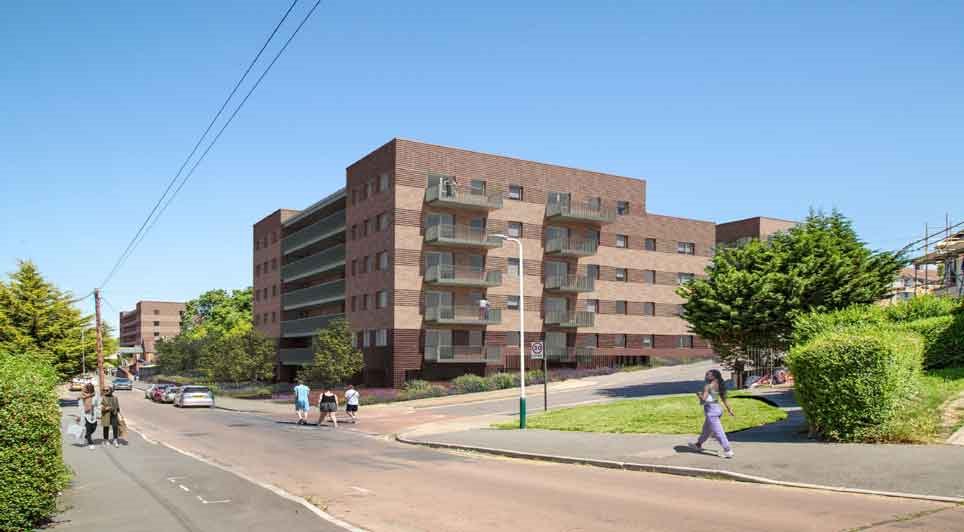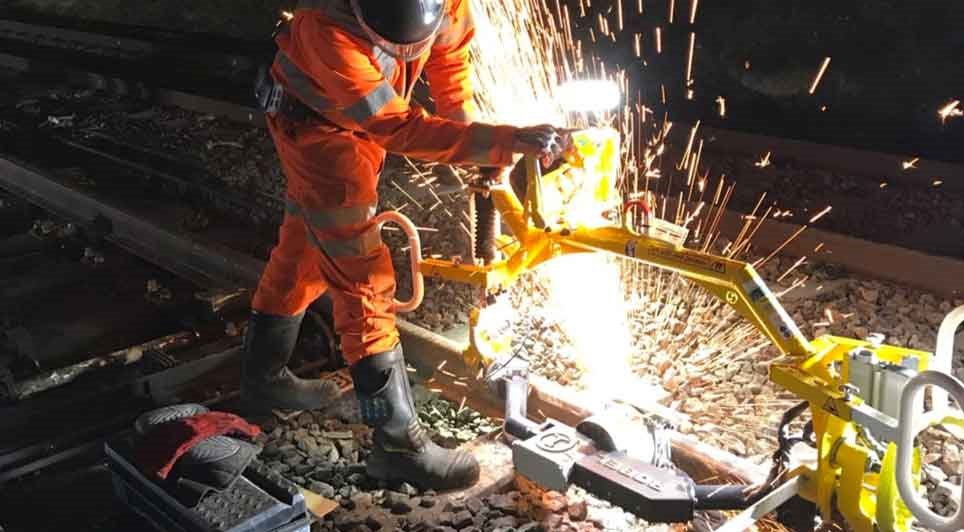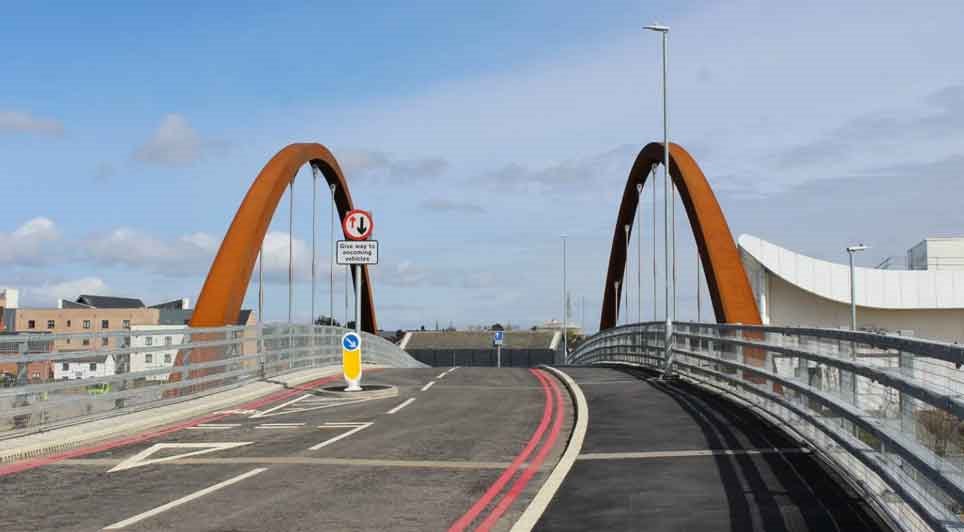Engineers from Heriot-Watt's Institute for Infrastructure and Environment have designed a 'sacrificial device' for buildings that will absorb the impact of earthquakes or blasts, preventing collapse and reducing the damage and residual drifts that can render buildings uninhabitable.
Current European 'earthquake-proof' buildings were designed to prevent collapse in the event of a strong earthquake. However, they do not prevent extensive damage that is difficult to repair, or residual drifts. If buildings experience one or both of these factors, the cost of repairs can become prohibitive, and demolition may be the only viable option.
Dr George Vasdravellis, Assistant Professor in Structural Engineering, used experimental testing and computer simulations to prove that his new system minimises the damage caused to buildings up to 10 storeys high in an area of high seismicity, with one in 475 year seismic events.
Now, he and his team are adapting the design for taller buildings to ensure that the novel, minimal-damage steel frame will address the disadvantages of conventional building design.
Dr Vasdravellis said: "The non-repairable damage and residual deformations that conventionally-designed buildings experience after a seismic event represent a severe socio-economic loss. We need new methods of resilience to tackle this issue.
"We have developed an innovative steel frame that could achieve high seismic resilience, structural and non-structural damage control, and minimise residual deformations.
"The system makes use of 'sacrificial devices' made of stainless steel material. The devices are placed strategically in the structure, so that they are the only damaged components during earthquake loading.
"In the aftermath of a strong seismic event, they can be easily replaced with new ones, so that the building can return to its usual occupation very quickly.
"The inherent properties of stainless steel results in the significant reduction of the residual drifts after a strong earthquake.
"Through experimental testing and numerical simulations, we found that our system had negligible residual drifts under loading corresponding to the 'design earthquake', compared to conventional building designs, which experienced drifts that were four to five times larger."
The ability to retrofit the device and make it commercially viable for architects and construction firms is at the forefront of Dr Vasdravellis's mind.
He continued: "In Greece and Italy, we've watched new areas become seismic, where previously there had been little activity. We must also consider, unfortunately, the impact of explosions or other attacks on buildings that could impose extreme loading conditions.
"The sacrificial devices will mitigate progressive collapse due to explosions, or other extreme events, that result in the loss of one or more columns in the building. Therefore, we are further developing the system for multi-hazard mitigation.
"It is not enough to 'earthquake-proof' new buildings; we need simple, effective devices like this that can protect our existing built environment and heritage, minimising damage and costs in the event of a seismic event or blast."
Dr Vasdravellis was awarded £140,000 by the European Commission for the next stage of his research into earthquake engineering.
(MH)
Construction News
25/10/2017
New Device Launches To Shatter Current Earthquake-Proofing Practice


15/07/2025
National Highways has appointed Skanska to deliver a £153 million upgrade to the A47/A11 Thickthorn junction, in a major project designed to reduce congestion, improve journey reliability and support future economic growth across the region.
The contract will see Skanska carry out wide-ranging impr

15/07/2025
Demolition work has begun this week on Chippenham Road in Harold Hill, marking the start of the next phase in Havering Council’s ambitious housing regeneration programme.
The cleared site will make way for 138 new homes, part of a major redevelopment effort under the borough’s 12 Estates regenerat

15/07/2025
Planning permission has been granted for a 66-bedroom care home at Vistry's Westcombe Park development in Heybridge, near Maldon, Essex.
The new facility will be operated by LNT Care Developments and delivered in partnership with specialist developer Charterpoint and Vistry, the master developer o

15/07/2025
Watkin Jones has launched Venti House in Stratford.
Venti House will be a new purpose-built student accommodation (PBSA) scheme offering excellent ESG credentials. The development is being funded through a Joint Venture between HGP and Watkin Jones and will be available for letting for the 2026/27

15/07/2025
Passengers travelling to and from Cardiff this coming weekend are being advised to check their journey plans in advance, as essential overnight engineering works will cause disruption between 19–21 July.
Network Rail will be carrying out critical upgrades between Cardiff Central and Newport, design

15/07/2025
A major milestone in Chelmsford's city centre regeneration has been reached as the newly named Bow Bridge Road officially opened, providing a crucial new link to Chelmer Waterside and paving the way for future development on the city's largest brownfield site.
Delivered on behalf of Chelmsford City

15/07/2025
At Freshbreeze, we believe that clean air is not just a necessity.... it's a right.
That's why we were proud to stand alongside local councillors, MPs, NHS leaders, and key stakeholders at Midlands Metropolitan University Hospital to pledge our commitment to healthier, greener communities. The ove

15/07/2025
Green wall tiles had always been a versatile option suitable for different interiors and styles.
Available in a very wide variety of tones - starting with soft and faded sage and mint and finishing with deep emerald and forest green. These wall tiles are capable to transform spaces into stylish an

11/07/2025
Story Homes has submitted a full planning application to South Ribble Borough Council for a proposed new residential development in Longton, aiming to build on the success of its nearby Longton Grange scheme.
With the majority of homes now sold at Longton Grange, the developer is looking to meet co

11/07/2025
Essar Energy Transition (EET), through its subsidiary EET Property Limited, has completed the acquisition of Thornton Science Park.
The 66-acre site includes purpose-built laboratories, industrial facilities, and office space, and is set to play a central role in EET's ambition to create one of Eur
 UK
UK Ireland
Ireland Scotland
Scotland London
London











